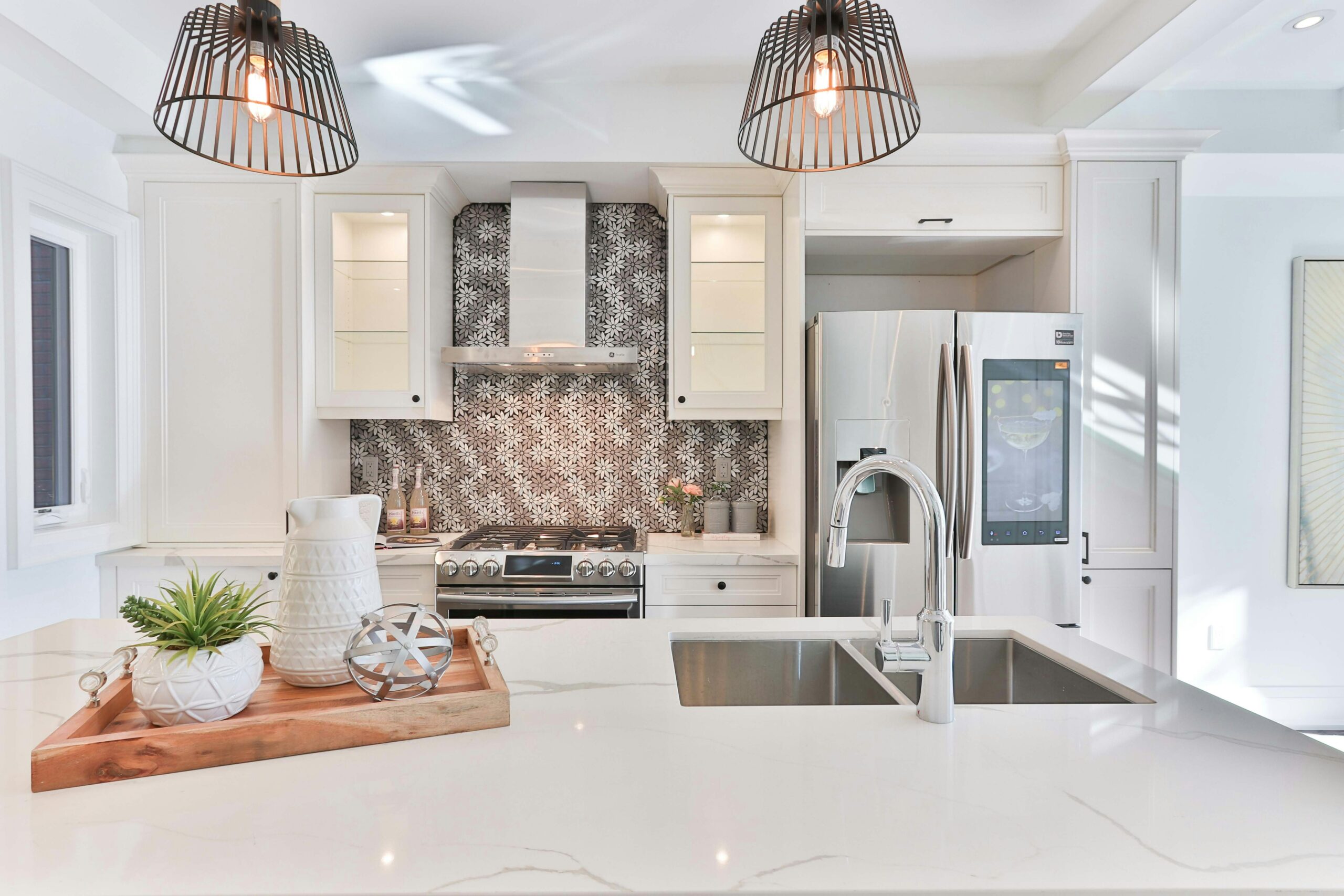When it comes to home improvement and DIY projects, a common question that homeowners frequently ask is, “can you paint granite countertops?” For many, granite countertops are a symbol of sophistication and luxury, but over time, their colors may not blend well with updated kitchen or bathroom aesthetics. While most people appreciate the natural appeal of granite, should you find yourself itching to change the look of your countertops or simply cover some wear-and-tear, painting could be a viable option.
We have compiled this comprehensive guide filled with insights and tips that will help you understand the basics and explore the reasons behind why you might want to paint them. It will furthermore walk you through choosing the right paint, prepping your countertops for the process, and avoiding common mistakes. Additionally, we highlight the pros and cons of the project, maintenance tips for your painted countertops, expert advice, and real-life experiences shared by individuals who have braved this undertaking themselves.
In providing this information, we’re confident that this guide can help you make the right decision when it comes to painting and if you decide to proceed, arm you with the information necessary for undertaking this project.
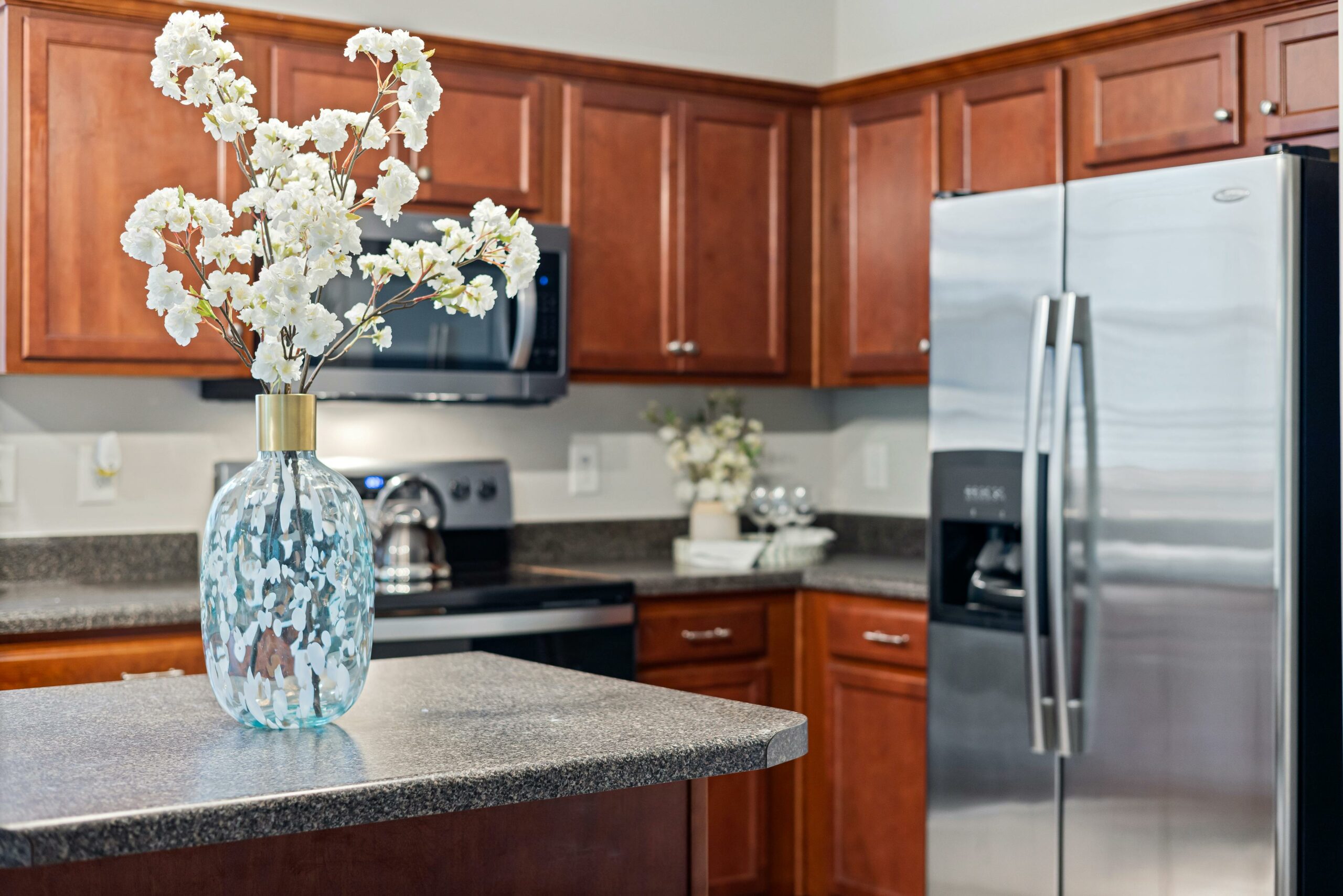
Understanding the Basics of Granite Countertops
Granite countertops are a popular choice for kitchens and bathrooms due to their durability, beauty, and natural elegance. Understanding the basics of granite countertops can help you make an informed decision when it comes to choosing the right countertop material for your home.
What is Granite?
Granite is a type of igneous rock that is formed from the cooling and solidification of magma deep within the Earth’s crust. It is composed mainly of quartz and feldspar minerals, which give it its unique appearance and strength.
Benefits of Granite Countertop
- Durability: Granite is one of the hardest natural stones, making it highly resistant to scratches, heat, and stains.
- Beauty: Granite countertops come in a wide range of colors and patterns, allowing you to find the perfect match for your kitchen or bathroom design.
- Longevity: With proper care and maintenance, granite countertops can last a lifetime, making them a worthwhile investment for your home.
- Value: Granite countertops can increase the value of your home, as they are considered a premium material that is highly sought after by homebuyers.
Installation and Maintenance
Installing granite countertops requires professional expertise to ensure proper measuring, cutting, and sealing. Once installed, are relatively easy to maintain. Regular cleaning with mild soap and water is usually sufficient to keep them looking their best. It is also recommended to reseal the countertops every 1-2 years to maintain their resistance to stains and moisture.
Conclusion
Understanding the basics of granite countertops can help you appreciate the unique qualities and benefits of this natural stone. From its durability and beauty to its longevity and value, granite countertops are a popular choice for homeowners looking to enhance the aesthetics and functionality of their kitchens and bathrooms.
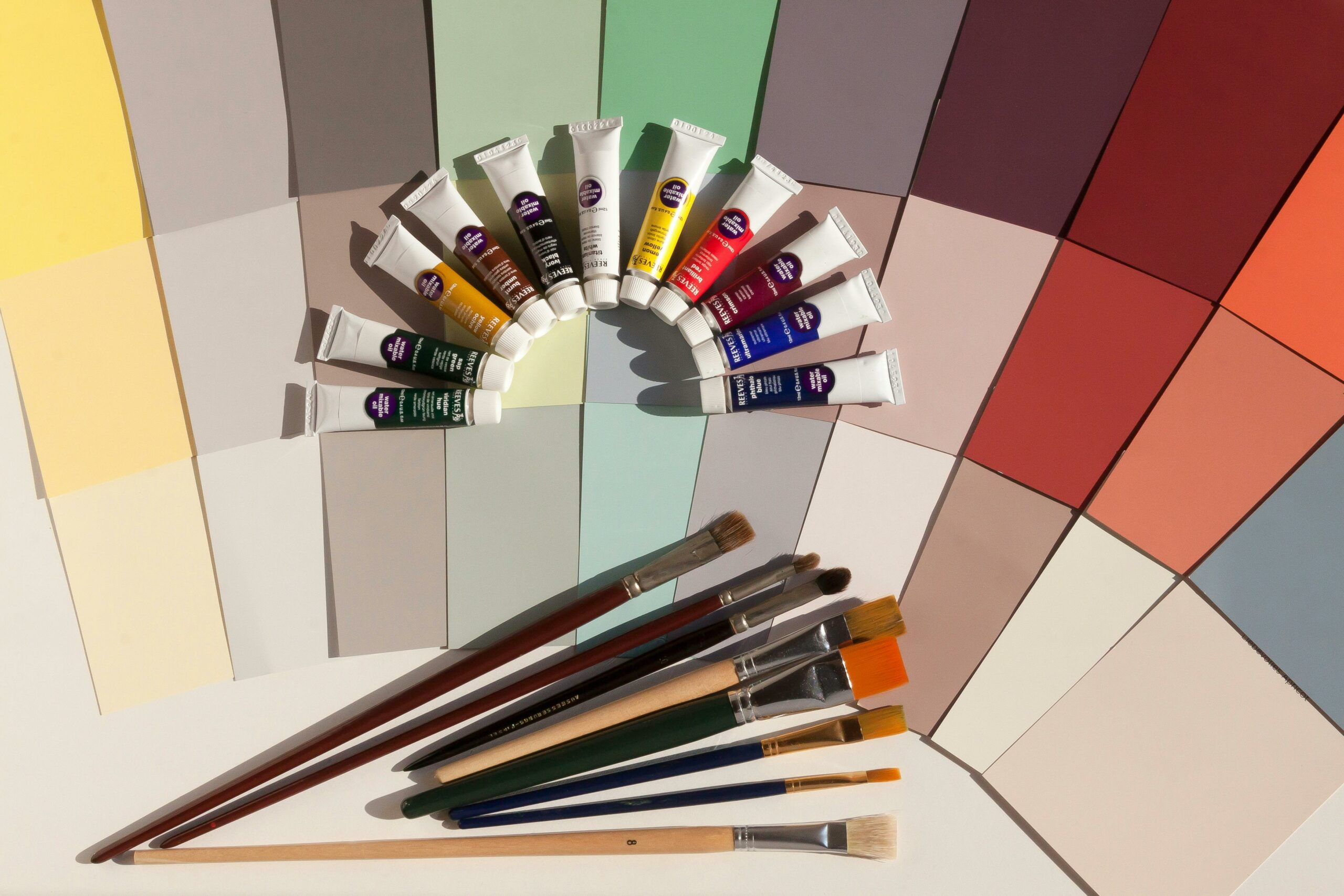
Why Would You Want to Paint
Painting granite countertops can be a great option for homeowners who want to update the look of their kitchen or bathroom without the cost and hassle of replacing the entire countertop. There are several reasons why you might consider painting:
- Cost-effective: Painting your granite countertops is much more affordable than replacing them altogether. It allows you to achieve a fresh, new look without breaking the bank.
- Customization: By painting your granite countertops, you have the freedom to choose any color or finish that suits your personal style and complements your existing decor. This gives you the opportunity to create a unique and customized look for your space.
- Temporary solution: If you’re not ready to commit to a permanent change, painting your granite countertops offers a temporary solution. If you decide you want to revert back to the original granite, you can simply remove the paint.
- Repairing damage: If your granite countertops have minor scratches, stains, or chips, painting them can help to conceal these imperfections and give your countertops a refreshed appearance.
- Updating outdated colors:</strong> Granite countertops that were installed years ago may have colors that are no longer in style. Painting them allows you to update the color to something more modern and in line with current trends.
- Experimenting with different looks: Painting your granite countertops gives you the opportunity to experiment with different looks and styles. You can try out bold colors or unique finishes that you may not have considered for your countertops before.
While painting granite countertops can be a great option for many homeowners, it’s important to understand the process and considerations involved. In the following sections, we will provide you with a step-by-step guide to painting granite countertops, tips for choosing the right paint, common mistakes to avoid, and expert tips to ensure a successful outcome.
Step by Step Guide to Paintinglt
Painting granite countertops can be a cost-effective way to update the look of your kitchen or bathroom. Follow these step-by-step instructions to achieve a professional-looking finish:
1. Clean the Countertops
Before you begin painting, it’s important to thoroughly clean the granite countertops. Use a mild detergent and warm water to remove any dirt, grease, or stains. Rinse the countertops with clean water and allow them to dry completely.
2. Sand the Surface
Next, lightly sand the surface of the countertops to create a rough texture that will help the paint adhere. Use a fine-grit sandpaper and gently sand in a circular motion. Be careful not to sand too aggressively, as you don’t want to damage the granite.
3. Apply a Primer
Once the countertops are clean and sanded, apply a primer specifically designed for use on granite surfaces. Use a brush or roller to evenly coat the countertops with the primer. Allow the primer to dry according to the manufacturer’s instructions.
4. Paint the Countertops
After the primer has dried, it’s time to paint the countertops. Choose a paint color that complements your kitchen or bathroom decor. Use a brush or roller to apply the paint in thin, even coats. Allow each coat to dry before applying the next one. Depending on the desired color and coverage, you may need to apply multiple coats of paint.
5. Seal the Paint
Once the paint has fully dried, it’s important to seal the surface to protect it from stains and damage. Apply a clear, water-based sealer designed for use on painted surfaces. Follow the manufacturer’s instructions for application and drying times.
6. Let the Countertops Cure
After sealing the paint, allow the countertops to cure for the recommended time. This will ensure that the paint and sealer fully bond to the granite surface and provide long-lasting durability.
7. Enjoy Your Painted Granite Countertops
Once the countertops have cured, they are ready to be enjoyed. Admire the new look of your kitchen or bathroom and take pride in the fact that you transformed your granite countertops with your own hands.</p>
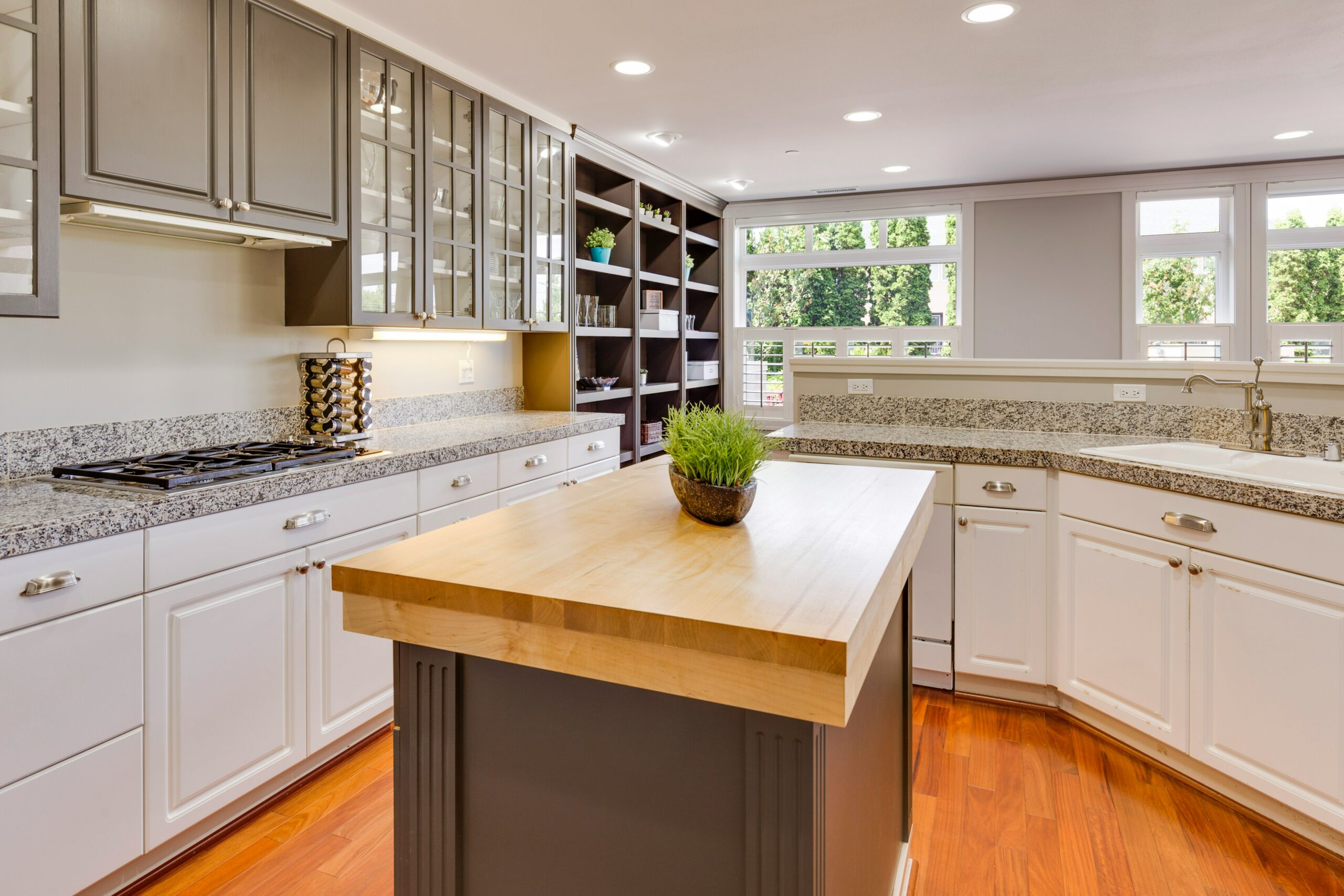
Choosing the Right Paint for Your Granite Countertops
When it comes to painting your granite countertops, choosing the right paint is crucial. The wrong paint can lead to a poor finish, peeling, or even damage to your countertops. Here are some factors to consider when selecting the perfect paint for your granite countertops:
1. Type of Paint
Not all paints are suitable for granite countertops. It’s important to choose a paint specifically designed for use on surfaces like granite. Look for paints that are labeled as “granite countertop paint” or “stone countertop paint.” These paints are formulated to adhere to the smooth surface of granite and provide a durable finish.
2. Finish
The finish of the paint can greatly impact the overall look of your granite countertops. Consider the level of shine or sheen you desire. Common options include matte, satin, semi-gloss, and high-gloss finishes. Keep in mind that a higher gloss finish may show more imperfections or scratches on the surface of the granite.
3. Color
Choosing the right color is essential for achieving the desired look for your granite countertops. Consider the overall color scheme of your kitchen or bathroom and select a paint color that complements it. You can opt for a color that matches the existing granite or go for a contrasting color to create a bold statement.
4. Durabilit
Granite countertops are subjected to daily wear and tear, so it’s important to choose a paint that can withstand the demands of everyday use. Look for paints that offer durability, scratch resistance, and stain resistance. These features will ensure that your painted granite countertops maintain their beauty for years to come.
5. Application Method
Consider the application method that works best for you. Some paints may require a brush or roller, while others can be sprayed on. Choose a paint that suits your preferences and skill level. Keep in mind that certain application methods may require additional tools or equipment.
By considering these factors and selecting the right paint for your granite countertops, you can achieve a beautiful and long-lasting finish that enhances the overall aesthetic of your kitchen or bathroom.
Prepping Your Countertops for Painting
Before you start painting your granite countertops, it’s important to properly prepare them to ensure the best results. Here are some steps to follow:
Clean the Countertops
Begin by thoroughly cleaning the countertops with a mild detergent and warm water. This will remove any dirt, grease, or stains that may be present. Be sure to dry the countertops completely before moving on to the next step.
Sand the Surface
Next, lightly sand the surface of the countertops using fine-grit sandpaper. This will help to roughen up the surface and create a better bond between the paint and the countertop. Be sure to wipe away any dust or debris after sanding.
Repair Any Damage
If there are any chips, cracks, or other damage to the countertops, now is the time to repair them. Use an epoxy or granite repair kit to fill in any imperfections and allow it to dry completely before moving on.
Mask Off the Surrounding Areas
Before you start painting, it’s important to protect the surrounding areas from any accidental paint splatters. Use painter’s tape to carefully mask off the edges of the countertops, backsplash, and any other areas you want to keep paint-free.
Apply a Primer
Applying a primer is essential to ensure proper adhesion of the paint. Choose a primer specifically designed for use on countertops and apply it evenly over the entire surface. Allow the primer to dry according to the manufacturer’s instructions.
Choose Your Paint
Once the primer is dry, it’s time to choose your paint. Look for a paint specifically formulated for use on countertops, as this will provide the best durability and finish. Consider the color and finish you want for your countertops and select a paint accordingly.
Apply the Paint
Using a high-quality brush or roller, apply the paint to the countertops in thin, even coats. Be sure to follow the manufacturer’s instructions for drying and recoating times. Allow the paint to dry completely before applying additional coats if necessary.
Seal the Surface
After the paint has dried, it’s important to seal the surface to protect it from stains and damage. Choose a clear, water-based sealer specifically designed for use on painted countertops. Apply the sealer according to the manufacturer’s instructions and allow it to dry completely before using the countertops.
By following these steps, you can properly prep your countertops for painting and achieve a beautiful, long-lasting finish. Remember to take your time and ensure each step is done correctly for the best results.

Common Mistakes When Painting Granite Countertops
When it comes to painting granite countertops, there are several common mistakes that people often make. These mistakes can lead to unsatisfactory results and even damage to the countertops. To ensure a successful painting project, it’s important to avoid these common pitfalls:
1. Not Properly Cleaning the Countertops
One of the biggest mistakes people make when painting granite countertops is not properly cleaning them before starting the painting process. It’s crucial to remove any dirt, grease, or stains from the surface to ensure that the paint adheres properly. Use a mild detergent and water to clean the countertops thoroughly, and make sure to dry them completely before applying any paint.
2. Skipping
Another common mistake is skipping the primer step. Primer helps to create a smooth and even surface for the paint to adhere to. It also helps to prevent the paint from peeling or chipping over time. Make sure to choose a primer that is specifically designed for use on granite countertops and follow the manufacturer’s instructions for application.
3. Using the Wrong Type of Paint
Using the wrong type of paint is a mistake that can have disastrous results. Regular household paint is not suitable for painting granite countertops as it may not adhere properly and can easily chip or peel. Instead, opt for a high-quality acrylic or epoxy paint that is specifically formulated for use on countertops. These paints are designed to withstand the daily wear and tear that countertops endure.
4. Applying Too Many Coats of Paint
While it may be tempting to apply multiple coats of paint to achieve a more vibrant color, applying too many coats can actually have the opposite effect. Excessive layers of paint can lead to a thick and uneven finish, and may even cause the paint to crack or peel. Follow the manufacturer’s instructions for the recommended number of coats and allow sufficient drying time between each coat.
5. Not Sealing the Painted Surface
After painting your granite countertops, it’s important to seal the painted surface to protect it from stains, scratches, and moisture. Skipping this step can result in a finish that is easily damaged and difficult to clean. Use a clear, water-based sealer that is specifically designed for use on painted countertops. Apply the sealer according to the manufacturer’s instructions and allow it to dry completely before using the countertops.
Avoiding these common mistakes will help ensure that your painted granite countertops look beautiful and last for years to come. Take the time to properly prepare, paint, and seal your countertops, and you’ll be rewarded with a stunning and durable finish.
Maintaining Your Painted Granite Countertops
Once you have successfully painted your granite countertops, it is important to take proper care of them to ensure their longevity and maintain their appearance. Here are some tips for maintaining your painted granite countertops:
1. Regular Cleaning
Regular cleaning is essential to keep your painted granite countertops looking their best. Use a mild, non-abrasive cleaner and a soft cloth or sponge to wipe away any spills or stains. Avoid using harsh chemicals or abrasive scrubbers, as they can damage the paint and the granite surface.
2. Avoid Heat Exposure
Although granite is known for its heat resistance, the paint on your countertops may not be as durable. To prevent any damage, always use trivets or hot pads when placing hot pots, pans, or dishes on your painted granite countertops. Avoid placing any hot items directly on the surface.
3. Use Cutting Boards and Trivets
To prevent scratches and dents on your painted granite countertops, always use cutting boards when chopping or slicing food. Avoid cutting directly on the painted surface. Similarly, use trivets or coasters under glasses, bottles, and other objects to protect the paint from any potential damage.
4. Avoid Harsh Chemicals
When cleaning your painted granite countertops, avoid using harsh chemicals such as bleach, ammonia, or abrasive cleaners. These can strip away the paint and damage the granite surface. Stick to mild, non-abrasive cleaners specifically designed for granite or natural stone surfaces.
5. Regular Sealing
To maintain the integrity of the paint and protect the granite surface, it is important to regularly seal your painted countertops. Follow the manufacturer’s instructions for the specific sealant you are using and reapply it as recommended. This will help prevent staining and keep your countertops looking fresh.
6. Handle with Care
Be mindful of how you handle objects on your painted granite countertops. Avoid dragging heavy or sharp objects across the surface, as this can scratch or chip the paint. Use caution when placing or moving items to prevent any accidental damage.
7. Address Stains Promptly
If you notice any stains or spills on your painted granite countertops, address them promptly. Blot the area with a clean cloth or paper towel to absorb any liquid. Avoid rubbing the stain, as this can spread it further. If necessary, use a granite-safe stain remover to treat the stain.
By following these maintenance tips, you can keep your painted granite countertops looking beautiful and extend their lifespan. With proper care, your painted granite countertops can continue to enhance the aesthetic appeal of your kitchen or bathroom for years to come.

Pros and Cons of Painting Granite Countertops
Painting granite countertops can be a cost-effective way to update the look of your kitchen or bathroom. However, it is important to weigh the pros and cons before making a decision. Here are some of the advantages and disadvantages of painting granite countertops:
Pros:
-
- Cost-effective: Painting granite countertops is much cheaper than replacing them entirely. It allows you to achieve a new look without breaking the bank.
-
- Customization: Painting your countertops gives you the opportunity to choose a color that matches your personal style and complements the overall aesthetic of your space.
-
- Easy to do: With the right materials and proper preparation, painting granite countertops can be a relatively simple DIY project.
-
- Temporary solution: If you’re not ready to commit to a permanent change, painting your granite countertops gives you the flexibility to change the color or revert back to the original look in the future.
Cons:
-
- Durability: While paint can provide a temporary update, it may not be as durable as the natural stone surface of granite. Over time, the paint may chip or wear off, requiring touch-ups or repainting.
-
- Surface preparation: Properly prepping the granite surface for painting can be time-consuming and labor-intensive. It requires thorough cleaning, sanding, and priming to ensure proper adhesion and long-lasting results.
-
- Limitations: The color options for painting granite countertops are limited compared to the wide range of natural colors and patterns available in natural granite. It may be challenging to achieve the exact look you desire.
-
- Resale value: Painting granite countertops may not add as much value to your home as installing new, high-quality granite countertops. If you plan to sell your home in the future, potential buyers may prefer the authenticity and durability of natural stone.
Before deciding whether to paint your granite countertops, carefully consider these pros and cons to make an informed decision that aligns with your budget, style preferences, and long-term plans for your home.
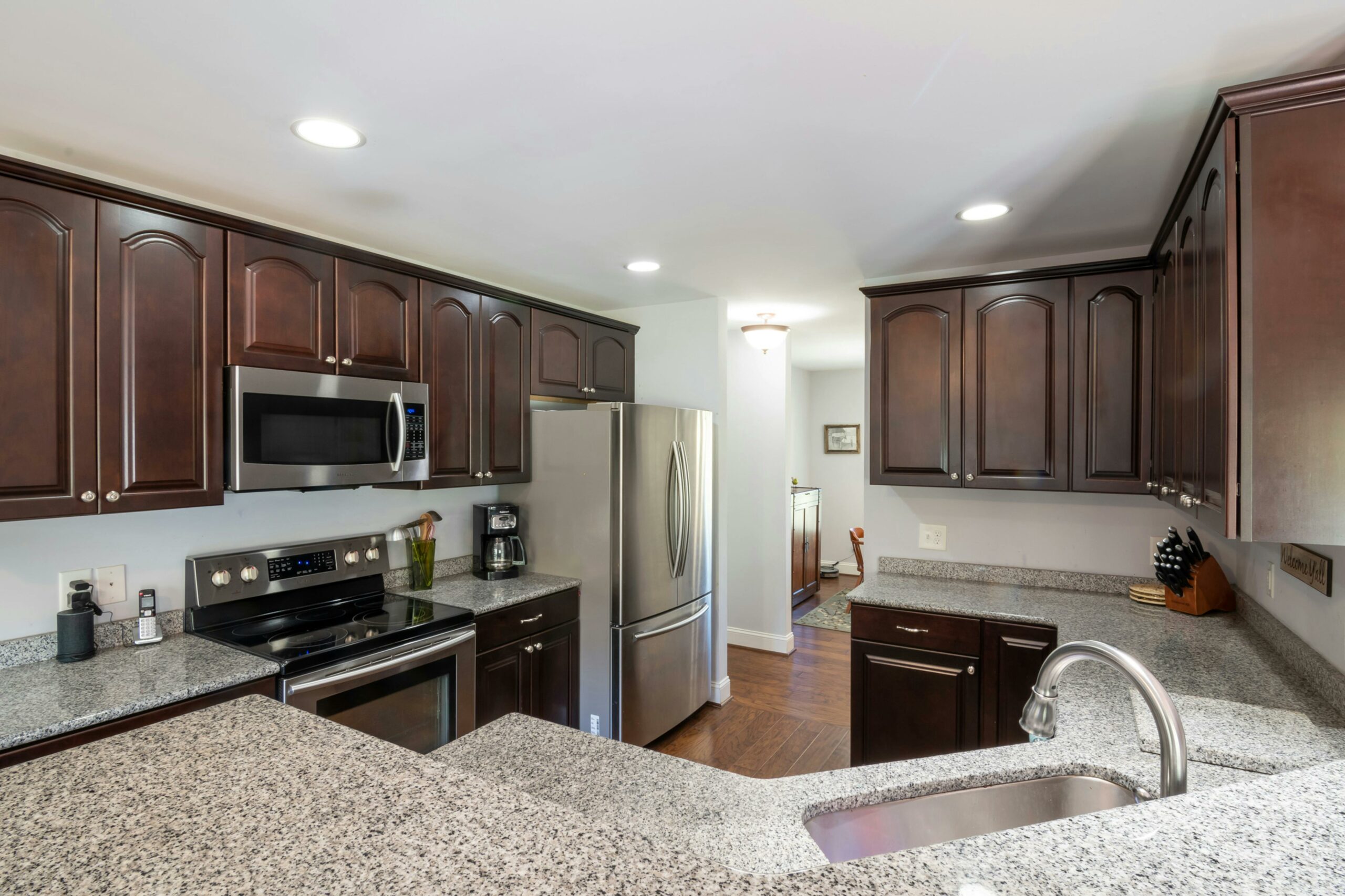
Expert Tips for Painting Granite Countertops
When it comes to painting granite countertops, there are a few expert tips that can help you achieve the best results. Here are some valuable tips to keep in mind:
1. Clean and Prep the Surface Thoroughly
Before starting the painting process, it is crucial to clean and prep the surface of your granite countertops. Use a mild detergent and warm water to remove any dirt, grease, or stains. Rinse thoroughly and allow the countertops to dry completely before proceeding.
2. Use a High-Quality Primer
Applying a high-quality primer specifically designed for use on granite countertops is essential. This will ensure proper adhesion of the paint and create a smooth and durable finish. Be sure to follow the manufacturer’s instructions for application and drying times.
3. Choose the Right Paint
When selecting paint for your granite countertops, opt for a high-quality, durable paint that is specifically formulated for use on surfaces that experience high traffic and potential moisture exposure. Look for paints that offer stain resistance and easy cleanability.
4. Apply Thin and Even Coats
When applying the paint, it is important to apply thin and even coats to achieve a smooth and professional-looking finish. Avoid applying thick coats as this can lead to drips, uneven drying, and an overall poor result. Allow each coat to dry fully before applying the next.
5. Consider Using a Sealant
To enhance the longevity and durability of your painted granite countertops, consider applying a sealant over the painted surface. This will provide an additional layer of protection against stains, scratches, and general wear and tear.
6. Allow Ample Drying Time
After completing the painting process, it is crucial to allow ample drying time before using your countertops. Follow the manufacturer’s instructions for drying times, and avoid placing any objects or applying pressure to the surface until it is fully cured.
7. Regularly Clean and Maintain
To keep your painted granite countertops looking their best, it is important to regularly clean and maintain them. Use a gentle cleaner specifically designed for use on painted surfaces and avoid abrasive cleaners that can damage the paint.
8. Seek Professional Help if Needed
If you are unsure about the painting process or encounter any difficulties along the way, do not hesitate to seek professional help. Hiring a professional painter or consulting with a paint specialist can ensure that your granite countertops are painted correctly and to your satisfaction.
By following these expert tips, you can transform the look of your granite countertops with a fresh coat of paint. Enjoy the beauty and durability of painted granite countertops in your home!
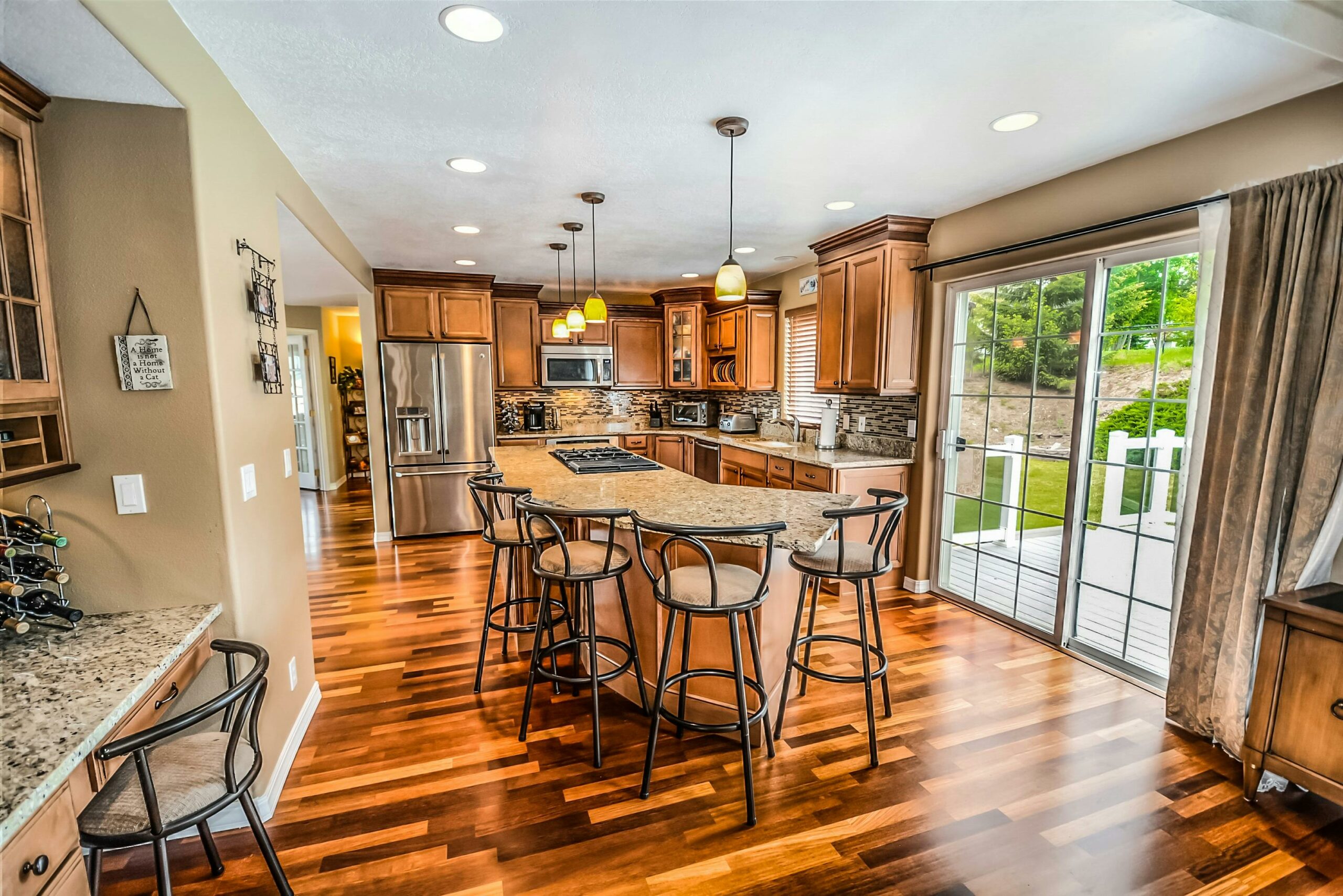
Real-Life Experiences of Painting Granite Countertops
Painting granite countertops can be a great way to update the look of your kitchen or bathroom without the cost of replacing the entire countertop. Many homeowners have successfully painted their granite countertops and have shared their experiences online. Here are some real-life stories of people who have painted their granite countertops:
A Beautiful Transformation
One homeowner shared their experience of painting their outdated, brown granite countertops. They chose a light gray paint color to give their kitchen a more modern and fresh look. After properly prepping the countertops and applying multiple coats of paint, they were amazed at the transformation. The countertops now look like they were professionally done, and they couldn’t be happier with the results.
A Cost-Effective Solution
Another homeown decided to paint their granite countertops as a temporary solution until they could afford to replace them. They opted for a white paint color to brighten up their kitchen and make it feel more spacious. The painting process was relatively easy and affordable compared to the cost of buying new countertops. They were pleasantly surprised by how much they loved the painted look and decided to keep it for the long term.
A Personalized Touch
One homeowner wanted to add a unique touch to their kitchen by painting their granite countertops with a faux marble finish. They followed a step-by-step tutorial and used a combination of paint and glaze to achieve the desired effect. The end result was a stunning, one-of-a-kind countertop that became the focal point of their kitchen. They received many compliments from friends and family and were proud of their DIY project.
A Time-Consuming Process
While many homeowners have had positive experiences painting their granite countertops, some have found the process to be more time-consuming than expected. One individual shared their story of spending several weekends prepping, priming, and painting their countertops. They encountered some challenges along the way, such as ensuring an even application of paint and avoiding streaks. Despite the extra time and effort, they were ultimately satisfied with the end result.
Long-Lasting Results
Several homeowners have reported that their painted granite countertops have held up well over time. With proper preparation and sealing, the paint has remained durable and resistant to scratches and stains. Many have shared that their painted countertops still look as good as new even after several years of use. This long-lasting result has made the painting process worthwhile for those who want to update their countertops without the expense of replacement.
These real-life experiences highlight the various outcomes and challenges that homeowners may encounter when painting their granite countertops. It’s important to thoroughly research and prepare before embarking on this project to ensure the best possible results.

